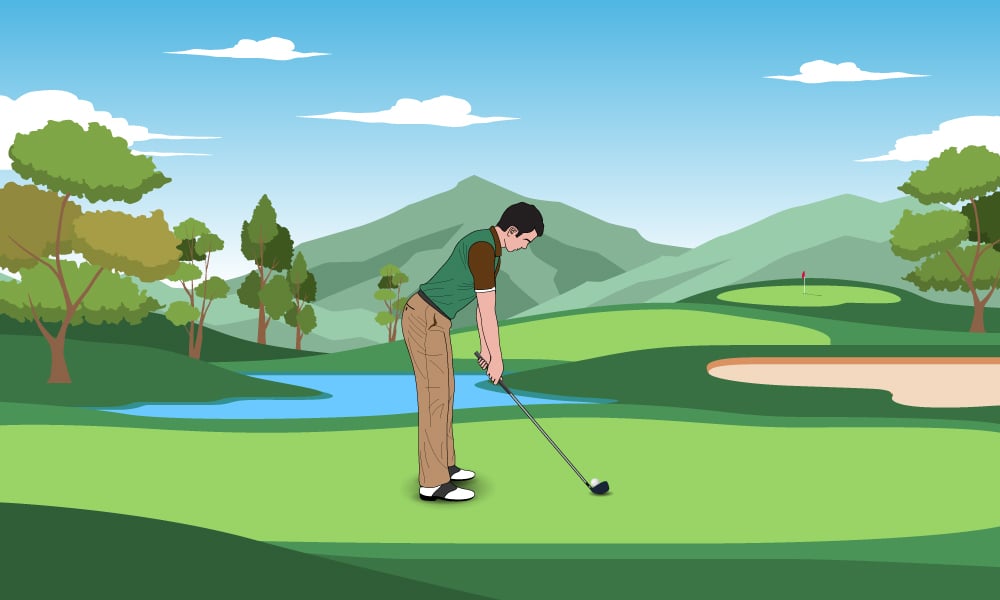Have you ever wondered why golfers often take time to adjust their stance and have a shadow swing before playing any shot? If yes, then this article is for you.
Golfers do this to perfect their swings and get maximum distance with accuracy because you can’t play different shots with the same stance but different golf clubs. Not just the clubs, you need to adjust your swing based on the ball position.
Stance is one of the primary factors of a golf swing you need to adapt for a perfect golf swing. In this article, we will discuss stance, its importance, different types of stance based on each club, and a few frequently asked questions on stance.
Table of Content
3 Types of Basic Golf Stances
In golf, a Stance refers to a standing position before playing a shot. It includes the position of the two feet and the ball.
Based on these parameters, there are three basic types of golf stances that you can adapt. They are
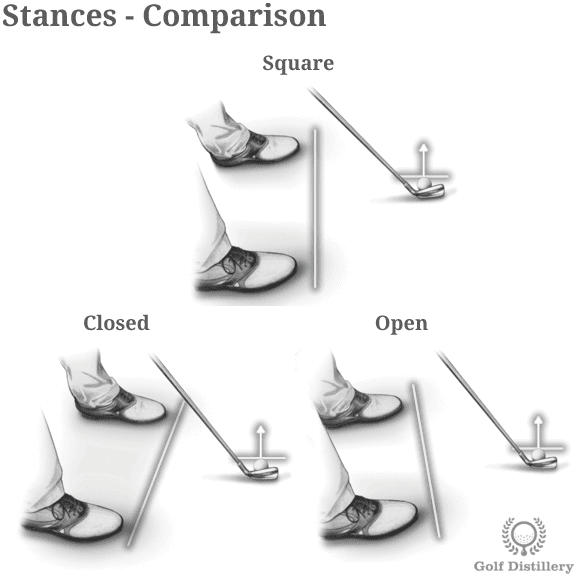
- Open Stance: You should stand more open towards the ball and target by putting your front leg slightly back from the other leg. For example, if you are a right-handed golfer, your left leg will stay slightly backward from your right leg, and your right leg will be slightly closer to the ball. This stance is beneficial to hit a fade shot with golf drivers and fairway woods.
- Closed Stance: This is the opposite of an open stance. Your front leg will be in the correct position in a closed stance, and your back leg will stay behind the parallel line. The image attached above illustrates the situation.
- Square Stance: Both your legs should be in a parallel line for a square stance. This stance is best for putting the ball. You can call it a golf putting stance as well.
Apart from the basic categories, you can have different golf stances based on the clubs. Because when you use a driver, your stance would not be the same as a putting stance. Let’s have a look at the golf stance for each club.
Golf Stance for different Golf Clubs
Golf stance for a driver
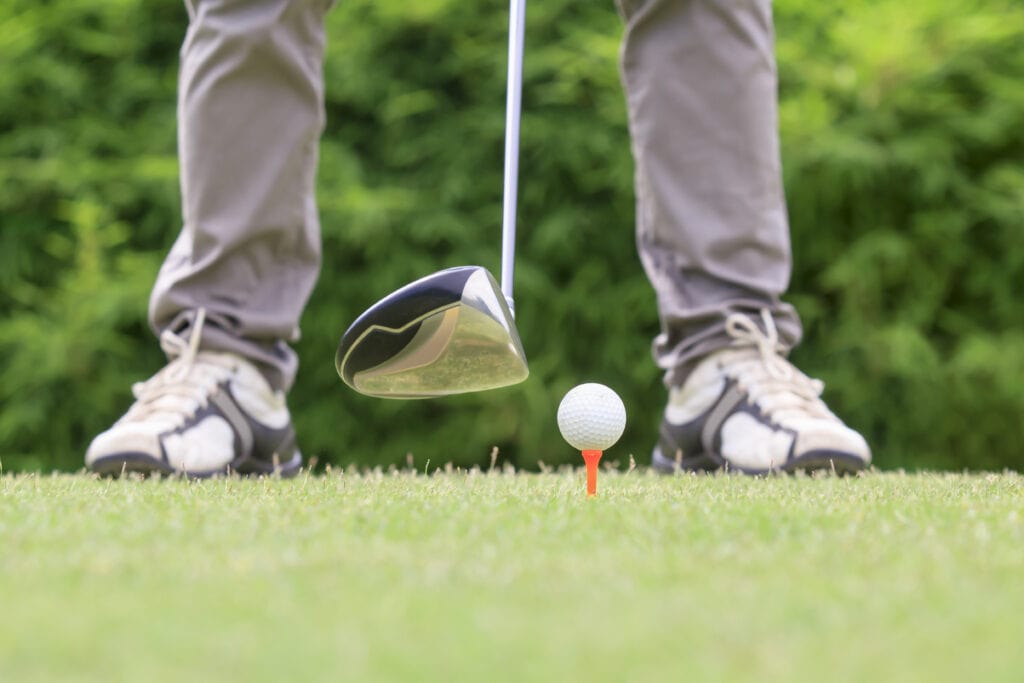
Your stance should be open while playing with one of the best golf drivers because we try to hit longer and higher with a good driver. If you have a closed stance while driving, it won’t generate maximum swing speed or give the most distance. The ball position in your driving stance should be opposite to the left heel (for a right-handed golfer), and the toe should be flared towards the target.
Your feet should be shoulder-width apart, which means the gap between your feet should be more than your shoulder length. And you should stand at a comfortable distance from the ball so that you can perform a full swing. This stance will benefit you by getting upswing for a greater height and distance.
Golf stance for irons and woods
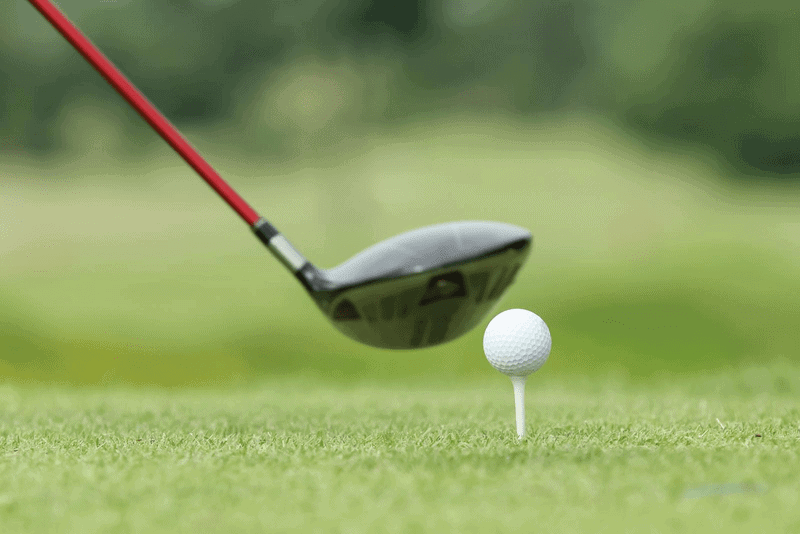
Irons are mostly shorter in length than drivers, so do the fairway woods. Due to the club length factor, you need to change your stance for golf irons and woods. You need to stand closer to the ball than the club length’s driver situation. Else you are more likely to lose balance and fall over.
Apart from moving towards the ball, you need to narrow the gap between your feet; it could be equal to shoulder length or slightly more than that. It is yet wider than standard. And the ball position should be more in the center of your feet gap.
Golf stance for wedges
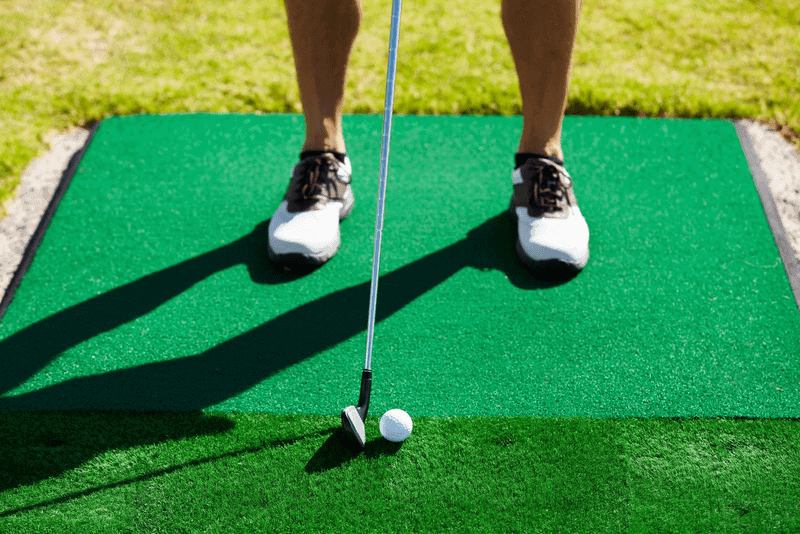
The stance for golf wedges is similar to the stance for irons. Based on the length of the golf wedges like pitching wedge, sand wedge, and lob wedge, narrow your feet gap. The shorter the club length, the narrower your feet should be. And the ball should be more in the middle of the stance. The differentiating factor of this stance would be the weight transfer. Execute a downward strike to generate backspin and better accuracy.
Golf stance for putter
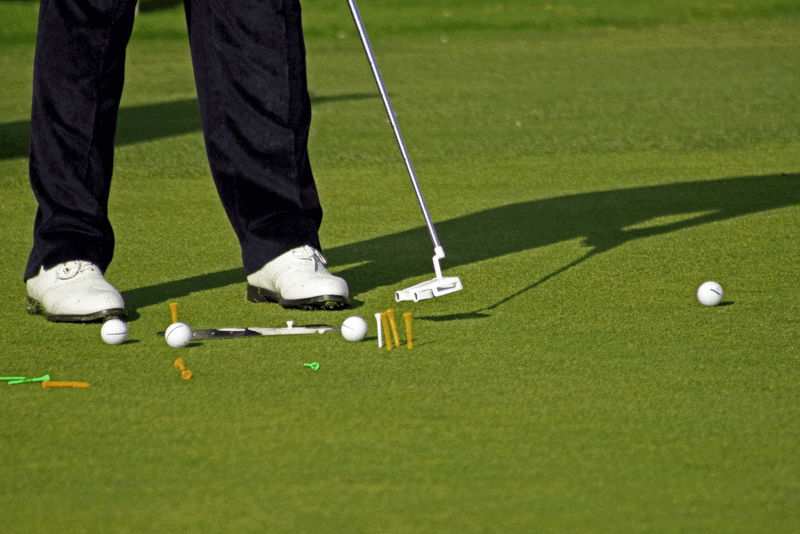
There is no textbook stance for putting. We suggest you practice different stances and find out what works best for you. The feet gap will be narrower than woods and wedges by how narrow it should be, that you need to figure out yourself.
We don’t recommend changing your stance too often if any stance is not working for you. Practice different stances for at least ten shots in the practice ground and execute the best in the match. Many golfers change their putting stance too often and ultimately lose the match. The more you practice a stance, the better it will get over time.
Frequently Asked Questions about Proper Golf Stance
Where to place the golf ball in stance?
Your golf ball should be in the middle of your stance in most cases. For driving stance, we suggest placing the ball opposite to the heel of your front leg for better accuracy and increasing golf swing speed. Apart from driving, place the ball in the center of your stance, and you should stand at a proper distance proportional to your height so that you can easily swing the club.
How wide should your golf stance be?
Your golf stance width should be wide enough to have balance even when swinging hard. Your shoulder length can be an excellent standard to adjust your stances in most cases. Watch the following video for details.
Common golf stance mistakes and how to fix them
There are some common mistakes that golfers often make with their stances. Here are the tips to fix them.
| Mistakes | Solution |
| Taking the same stance in every shot. | Adjust your stance according to the club you are using and the intent of the shot. |
| Most beginner golfers stand close to the ball. | Place your club behind the ball and stand so that you can hold the club easily with your stance. |
| Too wide stance | Shoulder length can be a standard width for stance. Your stance should equal your shoulder length or slightly more than that. |
Conclusion
A proper golf stance is a must for golfers who want to perform at the top level. You should have a clear idea of different types of golf stances to have the correct golf stance on each shot. We discussed those stances and how to adapt to them in this article.
Hopefully, our guidelines, alongside the images and videos, will quickly help you understand the concepts. Try these methods and let us know how it helps you. Also, mention any suggestions for your fellow golf partners.

